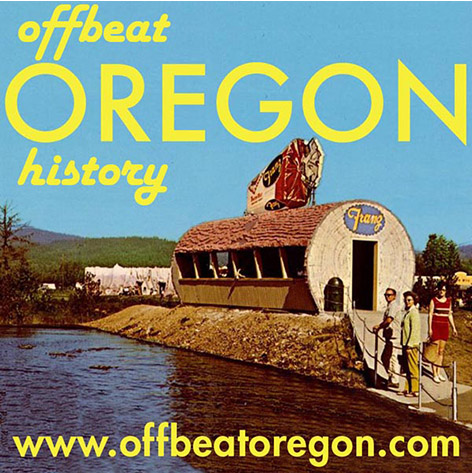JACKSONVILLE, JACKSON COUNTY; 1850s:
In gold-rush Jacksonville the bank ‘robbed’ you
Audio version: Download MP3 or use controls below:
|

A week spent dragging a wagonload of flour over the pass was a week not spent raking in coarse gold by the pint. That lost opportunity would have to be made up in the form of high prices. And oh yes, it was.
Soon a colony of Chinese miners moved in from California, and Jacksonville had the first Chinatown in Oregon. The future looked bright, and the town prospered even as the gold mines started their inevitable petering-out. Then, in 1884, disaster struck — disaster in a sort of miraculous form, from a modern historical standpoint. The Oregon & California Railroad was built running through Medford, bypassing Jacksonville completely. After that, the stagecoaches that had regularly thundered through the town’s streets no longer came. Jacksonville businesses started moving away, cozying up to the railroad line. The town faded, and its decline was made official in 1927 when the county seat was moved to Medford as well. By the time the Second World War was over, Jacksonville resembled a ghost town from a movie set — full of gorgeous old empty buildings surmounted by one of the finest old county courthouse buildings in the state. Moreover, possibly because so few people now lived there, it had never experienced a real fire. The town stood as it had in the late 1800s, frozen in time and preserved by the climate. The recovery started just after the war, when the Southern Oregon Historical Society was founded specifically to preserve that beautiful old county courthouse from the wrecking ball; they subsequently opened a museum in it, in 1950 (it closed for lack of funds several years ago, and the courthouse is now, as of the time of this writing, unoccupied). Recovery got a huge boost in 1963, when John Trudeau, an orchestra conductor from Portland, launched the Britt Festival on pioneer Peter Britt’s old estate — a sort of natural hillside amphitheater with a gorgeous view of the valley spilling out behind the stage. Then in 1966 the entire town was declared a national historic district. By that time, Jacksonville’s recovery was well under way. Today, Jacksonville is a popular destination for folks who want to see some vintage Oregon gold country history in person. It’s also a popular place in which to retire. Its population isn’t much above its Gold Rush peak, just shy of 3,000. And although plenty of gold miners (recreational, for the most part) still call it home, Jacksonville’s glory days of gold production are gone now. Or are they? In a remarkably striking statistical anomaly, this tiny town of 2,800 or so has, over the past 15 years, been the home of three multi-million-dollar Oregon Lottery jackpot winners, including a massive $340 million Powerball win in 2005. On a per-capita basis, no other town comes close to Jacksonville’s performance; a resident of Jacksonville in 2001 had a 1 in 800 chance of finishing the decade a millionaire. So, maybe the old Midas Touch hasn’t left Jacksonville after all.
|
Background photo is a postcard image of a family playing on the beach on a calm day, from a postcard published in the 1960s.
Scroll sideways to move the article aside for a better view.
Looking for more?
On our Sortable Master Directory you can search by keywords, locations, or historical timeframes. Hover your mouse over the headlines to read the first few paragraphs (or a summary of the story) in a pop-up box.
... or ...

©2008-2016 by Finn J.D. John. Copyright assertion does not apply to assets that are in the public domain or are used by permission.


